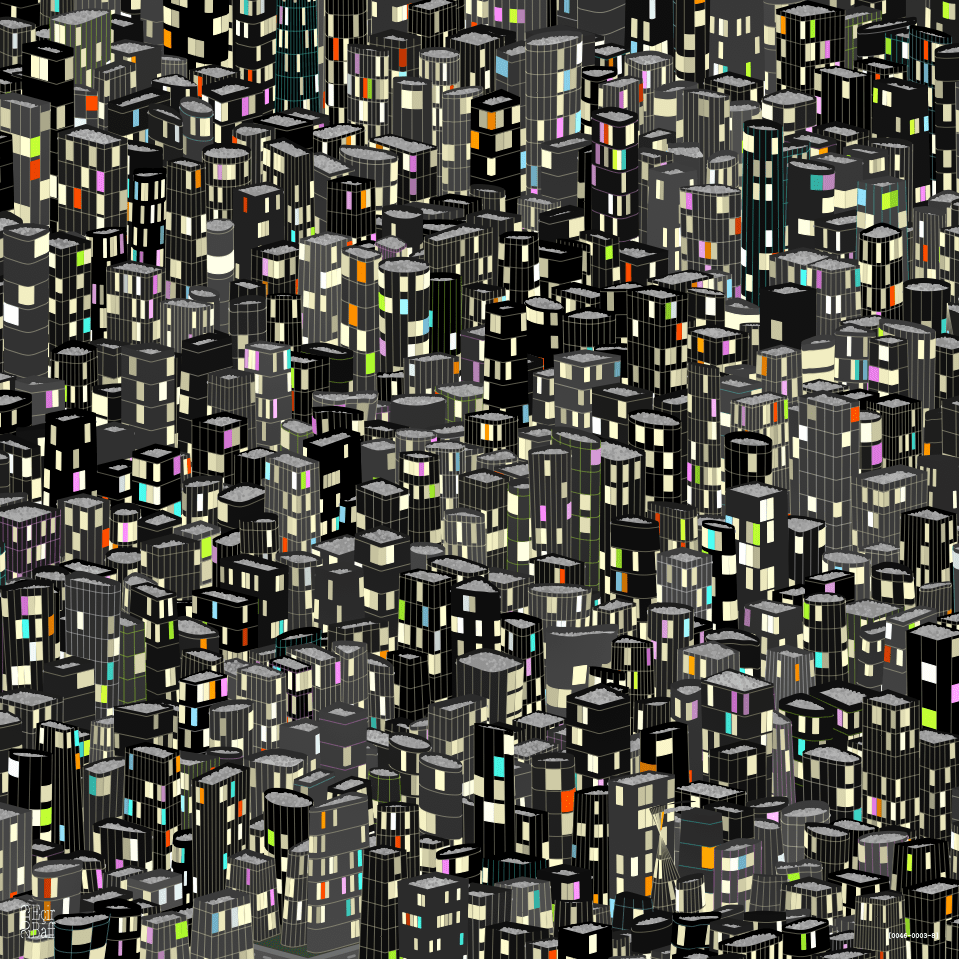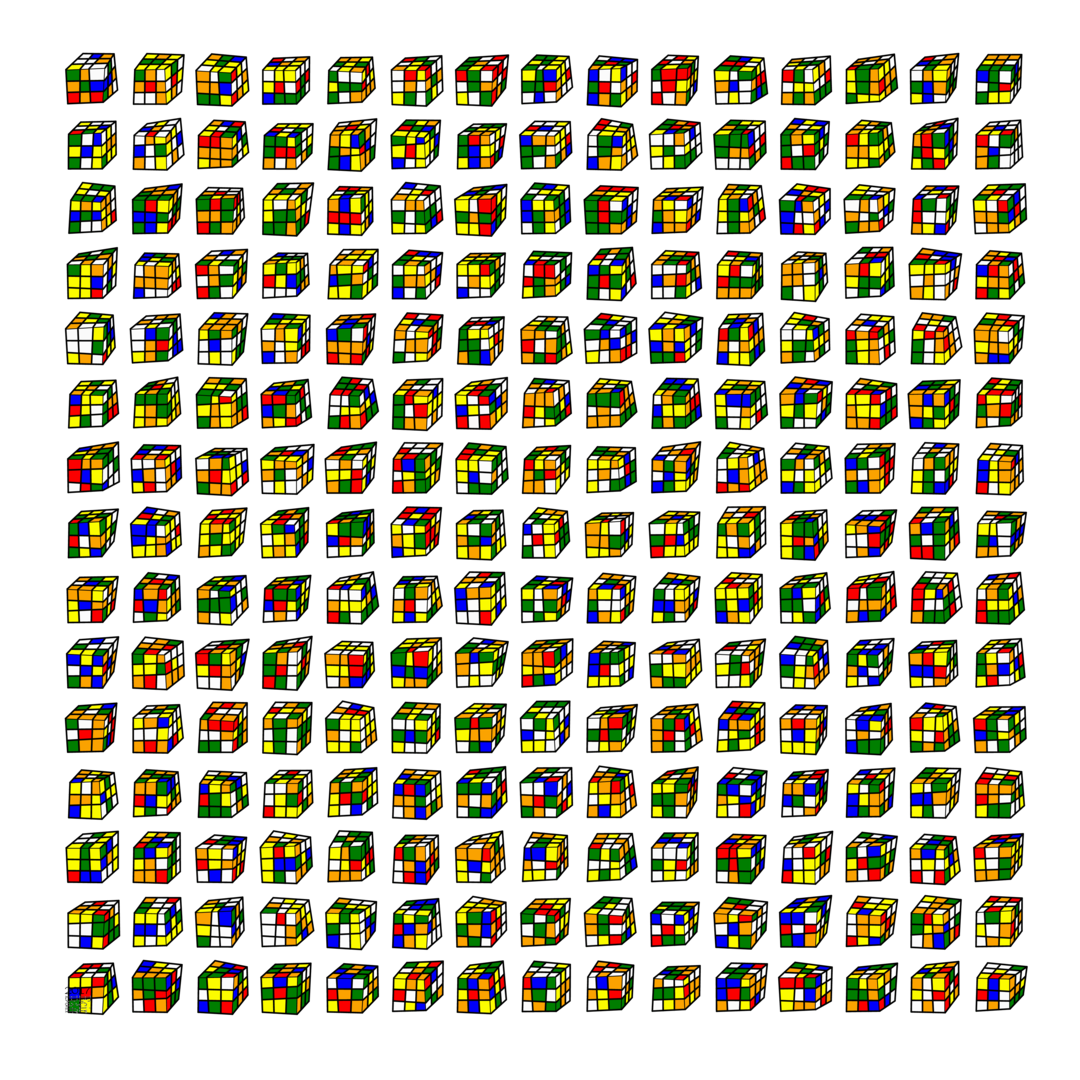Last updated: November 16, 2023
5Q w/ EcirBaff: Exploring the Magical World of Mathematics and Random Beauty
Meet EcirBaff, a generative artist, a math professor and an avid researcher whose artistic focus lies in the intersection between random processes and algorithmic control. His work emphasizes the organic beauty born from the fusion of chance and algorithmic precision. Each creation is a unique manifestation of stochastic forces shaping objects or paths, offering a glimpse into the realm of unpredictability beyond the scope of programmed thought.

EcirBaff’s art invites viewers on a journey of discovery, where subtle nuances unravel at their own pace, influenced by the viewer’s engagement, energy, and curiosity. Every piece is an exclusive outcome of chance, yet infinitely adaptable in various forms—be it in number, duration, or size.
We're honoured to welcome EcirBaff to our platform, showcasing his mesmerizing and infinitely diverse creations at Bohét.

Background and Inspiration:
Could you share a bit about your artistic background and what initially inspired you to delve into generative art?
Outside my artistic life, I'm a professor, regularly teaching stochastic processes. These are probabilistic models used to describe random phenomena, and are used in a wide variety of fields, including science, insurance and finance. The most common processes are Markov chains and Poisson processes. It was in this academic context that I began to represent random processes, mainly for pleasure: the idea was to bring these processes to life, by representing their realizations. The aim was to give students an intuition of these mathematical objects, so that they could better understand and appreciate them. In this way, I discovered the pleasure of creating.

Artistic Process and Techniques:
What techniques or processes do you use to create your generative artworks? Are there specific tools, software, or methodologies you prefer? How has your practice changed over time?
When I started making generative art, I didn't even know it existed. I was making rather simple and naive pieces at first, for fun, until one day I realized that others were playing the same game as me, and that this game had a name: generative art! As a result, I was unaware of the tools commonly used in this field, such as Processing, p5.js or GLSL. I started out on my own with the tools I had on hand; the only tool I knew anything about was MetaFun. It's an advanced derivative of the MetaPost language, which is related to MetaFont and other TeX, LaTeX and ConTeXt tools widely used in science. It's a purely vector-based language, so there are no pixels here, only points and curves! It's a bit of a constraint on creation, but I don't have the time today to learn other tools, maybe one day. The main disadvantage of using this language is that I can't discuss technical problems with other artists using it - there aren't any! I would advise a beginner to go for the classic tools, such as Processing, for which a multitude of resources are available.
In terms of creative methodology, I'm generally inspired by what I see, in life, in books, in museums, or on Instagram. A starting idea is explored, then worked on, until it evolves into something I find interesting. This starting idea can be a feeling, an existing work, a color, a shape... The exploration almost always leads to something totally different from the initial idea; so it's often the case that an exploration doesn't lead directly to anything, but the work is never completely useless either; it often leads to something else, but at another time. The idea is always to create a piece that provokes emotion; I seem to achieve this from time to time!

Relation to Bohét:
How did you discover Bohét, and what made you decide to share your art on this platform? Are there particular aspects of Bohét that resonate with your artistic vision?
Nerios, the person behind Bohét, and I are members of a generative art forum, and it was in this context, complaining that there was no printing platform dedicated to generative art, that Nerios told me about his exciting project. The basis of generative art, as I see it, is to leave room for chance; what we design are algorithms that create works that are all unique by design, as they are constructed with thousands of calls to random functions. In this context, it makes little sense to print the same creation several times over. Bohét therefore makes it possible - and unique - to print a work only once. This guarantees the art-lover a creation that's unique in the world! Of course, this creation is the fruit of an algorithm that has created or may create other similar pieces, that's how it works, but the uniqueness of each piece is exhilarating!

Artistic Vision and Themes:
Could you describe the themes or concepts that often appear in your generative artworks? How is mathematics and nature related to your creative process? Does Generative Art help you in other areas of your life?
I work with randomness, and the reason so many of us study and model randomness is that it's inherent to life! After all, isn't the evolution of human beings one of the finest examples of a random process? So randomness is part of life: it's everywhere, in everything that's alive, in nature. Using randomness naturally gives a humanity to each piece. I'm not sensitive to a perfect mathematical equation that's raw, cold, insensitive and lifeless. It's the noise that gives it life! So these random works are in a way a tribute to life, to noise. Obviously, there's a lot of mathematics hidden away in each creation, but I try to hide it as much as possible, because I don't think it's interesting in itself, just useful.
What often appears in my work are circles; never quite perfect, these circular shapes are essential, because they are soft, inviting and natural. Nature rarely gives us right angles, so I follow her lead!
 Future Aspirations and Collaborations:
Future Aspirations and Collaborations:
What are your future aspirations as a generative artist, and do you foresee collaborating or exploring new avenues within the artistic community, including potential collaborations with other artists or platforms? What are your future plans as a Generative artist?
I'm currently totally outside the world of NFTs, which is a path I need to explore. But creating works that remain computer files doesn't seem very satisfying to me at the moment; I like the idea that they can be seen, and better still appreciated! For the future, I'd like to work on new musical collaborations; I've already collaborated on videos with young musicians, so that the images follow the music. It's a difficult exercise for me, technically, but a fascinating one. On a related note, I'd love to create long generative animations, but perhaps I'll have to change tools for that. Finally, I love architecture, the city, and I'd love to have an opportunity to put some generative art into it: putting a realization on a building, for example, would be extraordinary.
Last updated: November 16, 2023